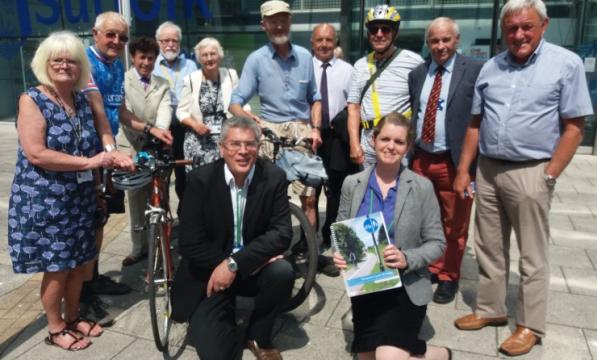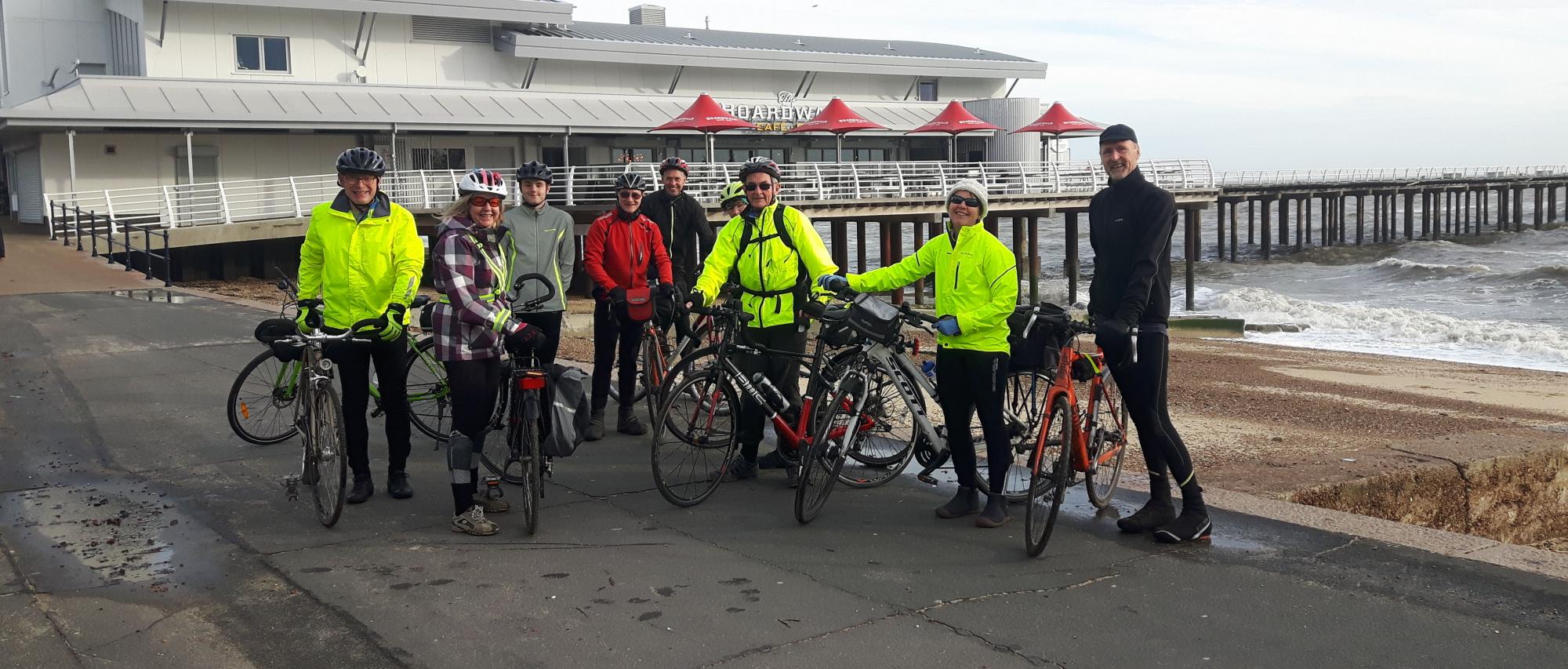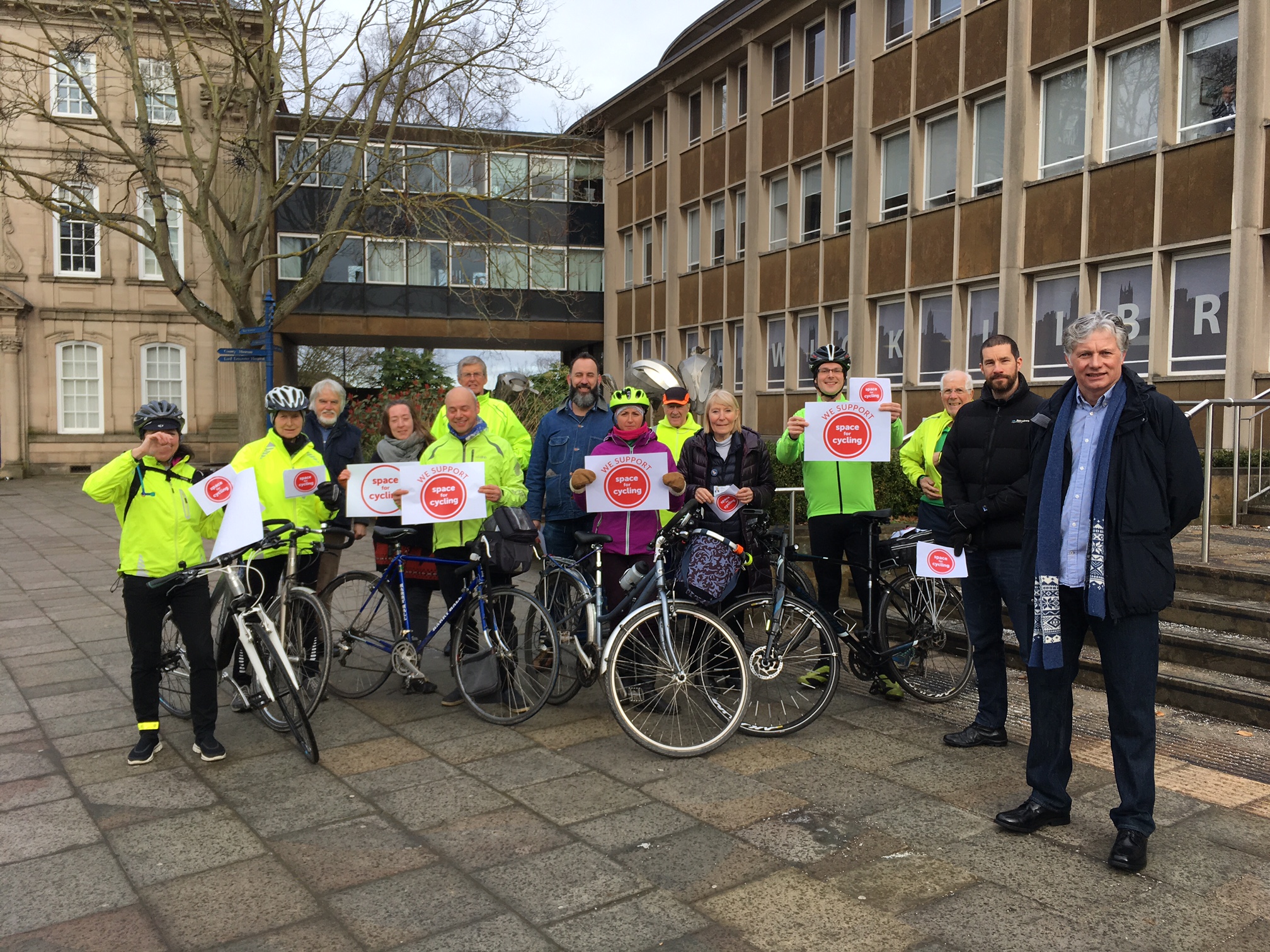Suffolk vote to plan a strategic cycle network

Yesterday (19 July 2018), Suffolk County Council unanimously voted to develop a strategic, costed five-year cycling plan. The plan will support a network of safe, accessible and direct routes and include a prioritised programme of works.
A second motion, to allocate 5% of the council’s Integrated Transport Block funding, amounting to just £160,000, was rejected by the ruling Conservative administration.
The motions were tabled by Green Cllr Robert Lindsay, who expressed disappointment that the Conservatives voted against the second motion, commenting “it makes absolutely no sense to agree to draw up a costed cycling plan, and then refuse to commit any funding to it”.
It makes absolutely no sense to agree to draw up a costed cycling plan, and then refuse to commit any funding to it.
Cllr Robert Lindsay, Green Party
Cllr Lindsay’s frustration is understandable. Over the last year, the council allocated 10% of its Integrated Transport Block to cycling, so the motion was not overly ambitious.
In his opening remarks Cllr Lindsay made clear that the intention of the motions was to strengthen the council’s bids for Government investment in local cycling infrastructure. He pointed out that since 2011, the council has been eligible for six Government grants but had failed to secure even one. Conversely, neighboring Norfolk secured four significant grants.
The difference, as Cllr Lindsay set out in his speech, is that Norfolk has a clear plan and committed funds for cycling. Norfolk beats Suffolk, according to Cllr Lindsay, because “the DfT [Department for Transport] simply don’t believe that we are truly committed to improving cycling”.
Cllr Lindsay is right to point out the paramount importance of having a detailed plan. And though it is frustrating that the council would not commit any funding, the motion passed to develop a clear and costed plan will be a tremendous step forward.
Speaking in the debate, Conservative Cllr Mary Evans, the cabinet member for highways, said she was “very pleased we are talking about cycling,” as she unfurled a copy of the Suffolk Conservatives election manifesto, which included a pledge to “develop new cycle networks.”
Cllr Evans welcomed the cross-party consensus on the benefits of increasing cycle use and agreed with Cllr Lindsay that “we need to produce a costed five-year cycling plan in order to access money from the DfT.”
Lib Dem Cllr David Wood said he received 102 letters from constituents asking him to support the motion, the result of an e-action created by Cycling UK. He pressed colleagues to not overlook the many benefits that cycling can bring to more rural parts of the county, as well as to urban centres.
One of the most memorable interventions came from Conservative Cllr Robin Millar. As a keen cyclist himself, he testified that the countryside, roads and weather in Suffolk make it a “really special part of the world to cycle.” But, he warned colleagues, “unless we make tough decisions now, it will be too late.”
Cllr Millar warned colleagues that local growth will be unsuccessful and unsustainable unless provision is made for cycling. In a passionate finale to his speech, he reached out to his fellow councillors, imploring them that “this is our moment.”
Given the consensus displayed in the debate, it is disappointing that the motion to fund the plan fell. It looked as though some councillors on the Conservative side would have gladly voted for it. The problem is that they were instructed not to and councillors risk their seat if they vote against the party line. ‘Whipping,’ as the process is known, generally carries much severer consequences for local politicians than for their counterparts in Parliament.
The whipping process makes it challenging for a minority group to get a motion passed, as Cllr Lindsay has done. It must have been hard work and, although it would have been nice for the funding motion to pass, Cllr Lindsay should be very pleased with his achievement.
As worded, the motion gives ample opportunity for the Conservative group to, as Cllr Lindsay says, “put their money where their mouth is.” We look forward seeing Suffolk’s plan and to the debate that will doubtless ensue when budgets are set for next year.
In the meantime, if you do not live in Suffolk, why not try getting a motion passed by your local authority? To get started, view our draft motion and guide to getting it passed.





